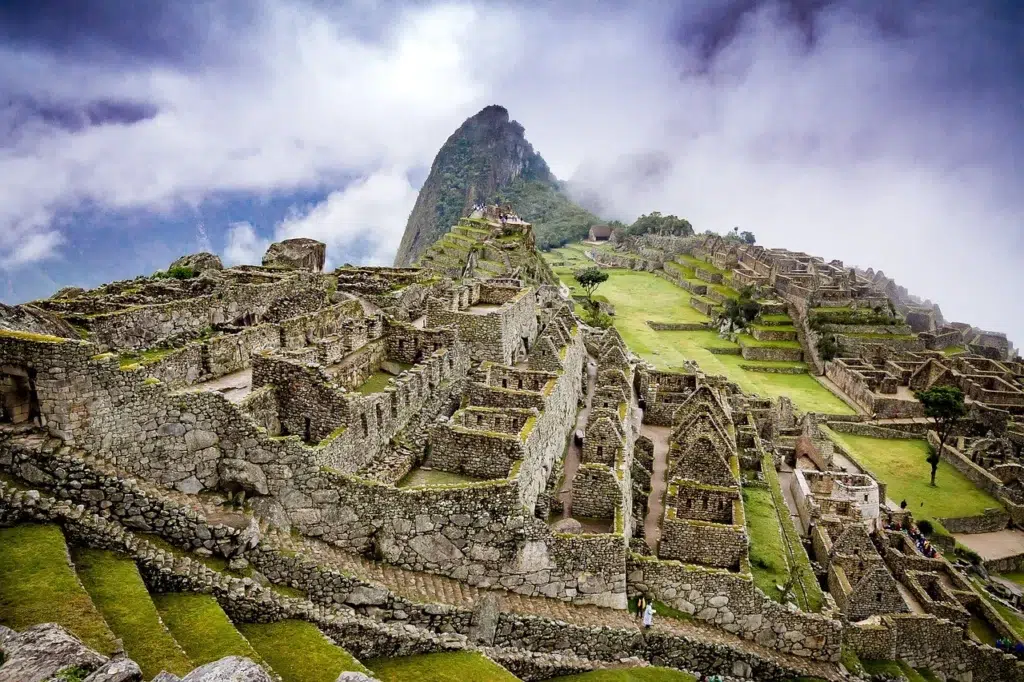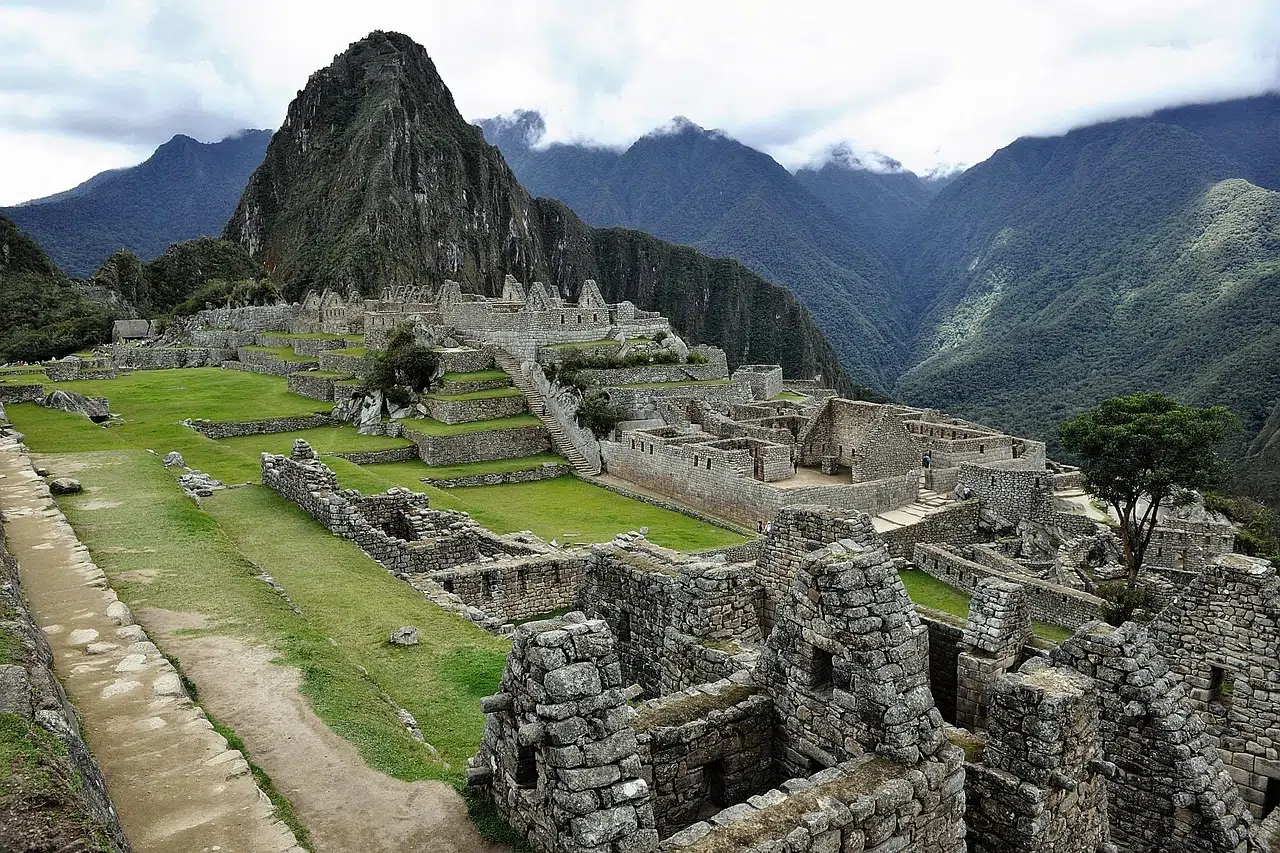What to pack for the Inca Trail isn’t just about checking items off a list – it’s about understanding the brutal reality of four days without showers, temperature swings that go from freezing to scorching in minutes, and porters who will (rightfully) refuse your overweight duffel. After completing the trek the hard way, then refining my approach on three subsequent journeys, I’ll share exactly what makes the cut – and what gets left behind – for the smartest, most comfortable Inca Trail experience possible.
Packing for the Inca Trail is one of the most important steps in preparing for your adventure. The right gear can make the difference between a comfortable, enjoyable trek and a challenging, uncomfortable one. In this article, we’ll provide you with the ultimate Inca Trail packing list, covering everything from clothing and footwear to essential gear and personal items. Whether you’re tackling the 2-day or 4-day trek, this guide will ensure you’re fully prepared for the journey ahead.
1. The Golden Rules of Inca Trail Packing
A. The 7-Kilo Limit (It’s Stricter Than You Think)
- Porters carry max 7 kg per hiker (including your sleeping bag!).
- My mistake: I assumed “7 kg” was flexible—it’s not. Weigh your bag before leaving Cusco.
B. Layer Like an Onion
- Temperatures swing from freezing nights to scorching midday sun.
- Pro tip: Avoid cotton—it traps sweat and takes forever to dry. Opt for merino wool or synthetic fabrics.
C. Rent vs. Bring
- Worth renting in Cusco: Sleeping bags, trekking poles, inflatable mats (saves luggage space).
- Must bring yourself: Broken-in hiking boots (blisters are not souvenirs).
2. Clothing: The Smart Layering System
Base Layers (Skin Contact)
- 2–3 moisture-wicking tops (e.g., SmartWool or polyester).
- 1 thermal bottom for cold nights (trust me, you’ll thank me at 3,800m).
Mid-Layers (Warmth)
- 1 fleece jacket (Polartec 200 is ideal).
- 1 lightweight down jacket (packs small but lifesaving at altitude).
Outer Layers (Protection)
- Waterproof shell jacket (Gore-Tex recommended).
- Rain poncho (even in dry season—Andean weather is fickle).
Bottoms & Extras
- 1 convertible hiking pants (zip-off legs = versatility).
- 4–5 pairs of hiking socks (Darn Tough or Bridgedale are blister-proof).
- Buff or neck gaiter (sun protection + makeshift scarf).
3. Footwear: Don’t Screw This Up
Hiking Boots
- Non-negotiable: Ankle support, waterproofing (Gore-Tex), and broken-in comfort.
- Test fit: Should allow one finger between heel and boot when laced.
Camp Shoes
- Lightweight sandals (e.g., Tevas) for airing out feet at night.
4. Gear: The Make-or-Break Items
Sleeping System
- Sleeping bag (rated to -10°C/14°F; down if possible).
- Inflatable pad (foam mats provided are not enough for sore backs).
Trekking Essentials
- Poles with rubber tips (saves knees on steep descents; rent if needed).
- Headlamp (Petzl or Black Diamond—no one likes midnight bathroom trips in the dark).
Daypack Must-Haves
- 2L hydration bladder (easier than bottles).
- Quick-dry towel (for “showers” at camps).
5. Health & Hygiene: Don’t Get Caught Out
Altitude & First Aid
- Diamox (start taking it before symptoms hit).
- Electrolyte tablets (combat dehydration from heavy sweating).
Toiletries (Minimalist Approach)
- Biodegradable wet wipes (your “shower” for 4 days).
- Sunscreen SPF 50+ (UV at altitude is brutal).
6. Pro Tips From Trail Veterans
What Not to Pack
- Jeans or cotton shirts (they’ll soak through and never dry).
- Hairdryer or makeup (seriously, I saw someone try this).
Last-Minute Buys in Cusco
- Coca leaves (chew them for altitude relief).
- Cheap ponchos (stock up in Ollantaytambo before the trek).
More Information
Why is Packing Smart So Important?
The Inca Trail is a multi-day trek that takes you through diverse landscapes, from high-altitude mountain passes to humid cloud forests. The weather can be unpredictable, with sunny mornings, rainy afternoons, and chilly nights. Additionally, you’ll need to carry most of your belongings, so packing light and efficiently is crucial. Here’s what you need to consider:
- Weight: Porters will carry most of the camping gear and food, but you’ll need to carry your personal items. Most tour operators limit your bag to 6-8 kg (13-18 lbs).
- Weather: Be prepared for all conditions, from hot sun to cold rain.
- Comfort: The right gear will keep you comfortable and focused on the trail.

The Ultimate Inca Trail Packing List
Here’s a detailed breakdown of what to pack for the Inca Trail, categorized for easy reference:
1. Clothing
- Moisture-Wicking Base Layers: Lightweight, quick-drying shirts and pants for hiking.
- Insulating Layers: A fleece or down jacket for cold mornings and evenings.
- Waterproof Jacket: A lightweight, breathable rain jacket is essential for sudden downpours.
- Hiking Pants: Convertible pants (zip-off to shorts) are versatile and practical.
- Hiking Socks: Bring 3-4 pairs of moisture-wicking, cushioned socks.
- Underwear: Quick-drying and breathable options.
- Warm Hat and Gloves: For chilly nights and early mornings.
- Sun Hat or Cap: To protect your face and neck from the strong Andean sun.
- Comfortable Clothes for Evenings: Lightweight, cozy clothes to change into at camp.
2. Footwear
- Hiking Boots: Sturdy, broken-in boots with good ankle support and grip.
- Camp Shoes: Lightweight sandals or sneakers for relaxing at camp.
- Gaiters: Optional, but helpful for keeping dirt and rocks out of your boots.
3. Gear
- Backpack: A 30-40 liter backpack with a rain cover.
- Sleeping Bag: A lightweight, compact sleeping bag rated for cold temperatures (at least -5°C/23°F).
- Sleeping Pad: Optional, but adds extra comfort.
- Trekking Poles: Highly recommended for steep ascents and descents.
- Headlamp: With extra batteries for early mornings and nighttime.
- Water Bottles or Hydration Bladder: At least 2 liters of capacity.
- Water Purification Tablets or Filter: To refill your water along the trail.
- Duffel Bag: For items carried by porters (check weight limits with your tour operator).
4. Personal Items
- Passport: Required for entry to the trail and Machu Picchu.
- Cash: For tips, souvenirs, and snacks (Peruvian soles are preferred).
- Sunscreen: High SPF, as the sun is intense at high altitudes.
- Lip Balm: With SPF to protect against sun and wind.
- Insect Repellent: Especially for the lower, more humid sections of the trail.
- Toiletries: Toothbrush, toothpaste, biodegradable soap, and hand sanitizer.
- Toilet Paper: Bring a small roll or pack of tissues.
- Quick-Dry Towel: Lightweight and compact.
- Personal Medications: Including altitude sickness medication if needed.
5. Optional but Useful Items
- Camera: With extra batteries or a portable charger.
- Notebook and Pen: For journaling or sketching.
- Snacks: Energy bars, nuts, or chocolate for extra fuel.
- Book or E-Reader: For downtime at camp.
- Earplugs: To block out noise at night.
- Playing Cards or Small Games: For entertainment in the evenings.

What NOT to Bring
To keep your pack light and manageable, avoid bringing:
- Unnecessary Electronics: Leave laptops and heavy gadgets at home.
- Excessive Clothing: Stick to the essentials and prioritize lightweight, versatile items.
- Heavy Books: Opt for a lightweight e-reader or a small notebook.
- Jewelry or Valuables: Keep it simple and secure.
Packing Tips for the Inca Trail
- Use Packing Cubes: These help organize your gear and save space.
- Layer Your Clothing: Dress in layers to adapt to changing weather conditions.
- Test Your Gear: Try on your boots, backpack, and clothing before the trek to ensure comfort.
- Pack Smart: Heavier items should go at the bottom of your backpack, with lighter items on top.
- Leave Room for Souvenirs: If you plan to buy souvenirs in Aguas Calientes, leave a little extra space in your bag.
Renting vs. Buying Gear
If you don’t already own hiking gear, consider renting or buying:
- Renting: Many tour operators offer rental options for sleeping bags, trekking poles, and backpacks. This is a cost-effective choice if you don’t plan to use the gear again.
- Buying: If you’re an avid hiker, investing in quality gear is worth it for long-term use.
Final Thoughts
Packing for the Inca Trail doesn’t have to be overwhelming. With this comprehensive packing list, you’ll have everything you need to stay comfortable, safe, and prepared for the adventure of a lifetime. Remember, the key is to pack light, prioritize essentials, and focus on enjoying the journey. Whether you’re marveling at the views from Dead Woman’s Pass or exploring the ancient ruins of Machu Picchu, the right gear will ensure you make the most of your Inca Trail experience.



